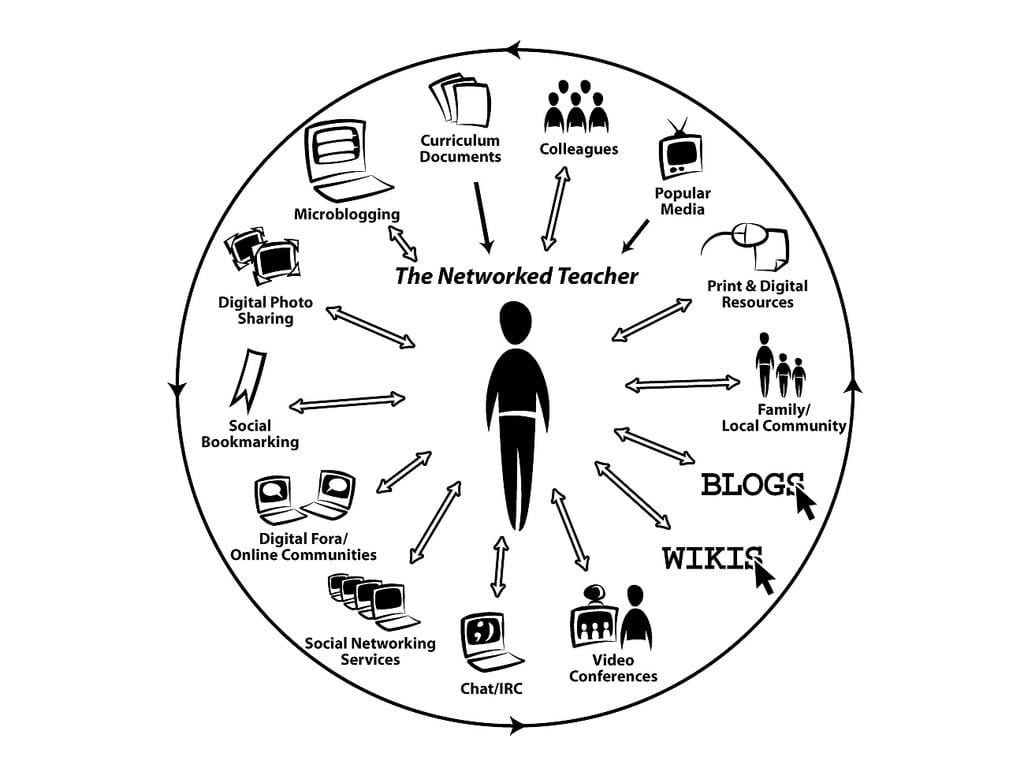
Community communications go beyond blogs and social media shares, how does a PLN help and hinder the development of thoughts and ideas in education discourse?
Personal Learning Networks (PLN) help the development of thoughts and ideas in education discourse through learning from different individuals. Hence, a different perspective because PLN is used by different people where they share their ideas and research. Using this community communication allows people to share these ideas and learn from one another, thus, developing new thoughts and ideas. Moreover, PLN helps engagement and sharing of knowledge. However, PLN can hinder the development of thought when there is an overload of information, and this overload can make it difficult to sort the required information and make it harder to develop information.
How do educators create discourse?
Achieving a successful discourse requires encouraging questions and asking knowledge; this allows engagement in class where students can feel safe to ask questions, allowing students to learn better. Moreover, group work also creates a successful discourse where individuals interact with one another and share their knowledge.
What is the role of social media in education?
Social media help access information where it provides a vast amount of information that students and instructors can access. This allows educators to share their experience and knowledge, as the study by Alec Couros emphasized the influence of the open movement on educators’ perceptions (Veletsianos, 2010), emphasizing collaboration and openness in education. Moreover, students can explore tutorials and online courses, allowing them to learn beyond the classroom. Furthermore, social media allows educators from different parts of the world to share their knowledge of teaching. This can help educators to adopt new teaching styles they learn through social media. My mother is a math teacher, and through social media, she learned new teaching techniques that she used with her students!
What are some problems with social media communications in education settings?
The main problem would be privacy. Almost all social media collect personal information. Thus, educators must use these social media in a way that does not impact the student’s privacy.
Which social media platforms are beneficial in education?
In my opinion, YouTube is very beneficial in education—the vast educational content with a wide range of educational videos and tutorials on almost everything. Moreover, many people learn better through visual learning, and YouTube provides a setting where people teach topics through animation, which help simplify the information and makes learning more enjoyable. In the book Emerging Technologies in Distance Education, Social cognitive theory (SCT) suggests that individuals can learn through observing others and adopt this knowledge positively (Veletsianos, 2010), which can be found through learning from YouTube.
How does social media fit into professionalism and regulations when working with the vulnerable sector?
Working with vulnerable sectors such as children and the elderly need a high level of privacy and confidentiality. The discussion on social media should not include personal or sensitive information; children and older people need to be educated about the privacy issues regarding sharing personal information on social media. Moreover, individuals working in the vulnerable sector should be trained and follow ethical guidelines, which include how educators/professionals need to behave in the vulnerable sector where you need to provide a safe environment to others.
Reference
Picture: https://teacherchallenge.edublogs.org/pln-making-connections/comment-page-1/
Veletsianos, G. (2010). Emerging technologies in distance education. AU Press.
Leave a Reply